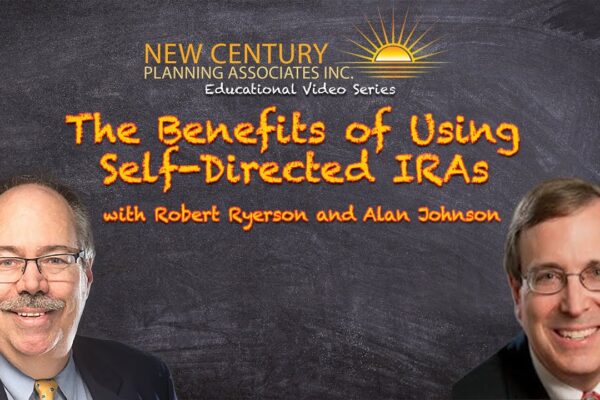Getting Started with Financial Planning, No Matter How Much Money You Have
Though many people consider financial planning as something only necessary for those with a substantial amount of wealth, the truth is that anyone can benefit from a good financial plan. Financial plans are a way to secure your financial future, build wealth, and afford large purchases or emergencies without going into debt.
You don’t need to be wealthy right now to put a good financial plan into place; you only need to care about stabilizing your financial future. Here are a few tips to help you create and maintain your own personal financial plan today.
What Is a Financial Plan?
 Simply put, a financial plan is a complete picture of your current financial situation, the goals you have for your financial future, and the plans you have to meet those goals. Your financial plan should include accurate figures for your savings, cash flow, investments, debts, mortgage, insurance, and any other components of your financial assets and liabilities. Anyone can create a financial plan for themselves, and it’s never too early to start working to achieve financial independence. Many people assume that without substantial wealth to their name, a financial plan is expensive or simply not worth the time and energy, but that couldn’t be farther from the truth. A financial plan is certainly useful for managing wealth, but it can also help you build that wealth by helping you gain control over your money and set and achieve realistic financial goals.
Simply put, a financial plan is a complete picture of your current financial situation, the goals you have for your financial future, and the plans you have to meet those goals. Your financial plan should include accurate figures for your savings, cash flow, investments, debts, mortgage, insurance, and any other components of your financial assets and liabilities. Anyone can create a financial plan for themselves, and it’s never too early to start working to achieve financial independence. Many people assume that without substantial wealth to their name, a financial plan is expensive or simply not worth the time and energy, but that couldn’t be farther from the truth. A financial plan is certainly useful for managing wealth, but it can also help you build that wealth by helping you gain control over your money and set and achieve realistic financial goals.
Understanding Your Financial Plan
An important thing to remember when you are putting together your own financial plan is that this is not a “one and done” task. Good financial planning requires reassessments and readjustments of your goals as your financial situation changes over the years. You must be willing to sit down every few years to reassess your assets, liabilities and goals, making adjustments as needed.
Have an Accurate Picture
The first step on the road to creating your financial plan is to have a clear and accurate picture of all your finances right now. Start by assessing where your money really goes—track all your expenses for a month or two. What you find may surprise you! Be sure to also include quarterly, yearly, or other non-monthly expenses.
Once you have an accurate picture of your spending habits, you will be able to make decisions about where cuts can be made and how you can redirect your money toward your financial goals. Then, you can draw up a budget that reflects this.
Plan for Emergencies
The most important thing you can do to establish your financial plan is to start out with an emergency fund. Sudden expenses, like medical bills, car accidents, and other sudden costs, can wreak havoc on your finances if you don’t have an emergency fund set aside. It’s ok to start out small by contributing as little as $10 per week—anything is better than nothing.
Conventional advice says to save three to six months of expenses for your emergency fund. Where you fall on this spectrum depends on your risk of losing your income, your access to other sources of financial support (like a relative who could bail you out), and whether you’re in a single or double-income household. If you work in an industry with high turnover and you don’t have a partner or family member to fall back on, you may want to create a fund that will see you through six months.
Manage Any High Interest Debt
One of the most difficult aspects of personal finance for many people is high interest debt piling up. If you want to gain control over your finances, a good way to start is by focusing on paying down those high interest debts, like credit card debt, title loans, rent-to-own payments, or payday loans. If these high interest debts are holding you back, it might be worth your time to consider a debt consolidation loan or other debt repayment plan to get a handle on them. It’s easy for debt to spiral and eventually cost you more than two or three times what you originally owed as interest piles up.
Define Your Goals
Goals in financial planning generally fall into two main categories: short or medium-term goals (think purchasing a house, saving for college, or funding a wedding) and long-term goals (funding your retirement, primarily). As you start creating a financial plan for yourself, write down specific goals for you and your family. These may change over time, but having a concrete idea of what you’re aiming for is helpful.
Consider also setting up automatic savings transfers so that putting money aside is easier. Many financial advisors suggest paying yourself first in order to meet your goals; that means before you pay any bills, put a percentage of your paycheck aside in your savings account. You’ll be less tempted to decide you just don’t have enough to save this month if it goes into savings before you even see it.
Remember, it’s never too early to start putting money aside for retirement. If your employer currently offers matching contributions for a 401(k) plan, take advantage of this as much as possible. Those matches essentially constitute free money for your retirement, so it is definitely something you want to take advantage of now.
Financial planning is a great way to ensure your personal financial future, whether you’re wealthy or not. Start planning for you and your family today!
Author
Robert Ryerson
Although Robert M. Ryerson completed all the necessary requirements to earn bachelor of arts degrees in both English and economics at Rutgers University, college policy at the time prohibited the issuance of dual degrees. As a result, he graduated from Rutgers with a single bachelor of arts in economics before finding employment as a stockbroker with Shearson Lehman American Express in New York City 1984. Robert M. Ryerson has since established himself as a respected estate administrator and legacy planner. In addition to his economics degree from Rutgers, Mr. Ryerson holds several professional designations including Retirement Income Certified Professional (RICP)®; Certified In Long Term Care (CLTC)®; Certified Financial Fiduciary (CFF)®, and Certified Identity Theft Risk Magenament Specialist (CITRMS)®. He has shared his knowledge on the subject of identity theft as the author of the book What’s The Deal With Identity Theft?: A Plain-English Look at Our Fastest Growing Crime. He has also covered identity theft issues directly for students as the instructor of the adult education course Understanding Identity Theft: Our Fastest Growing Crime.






